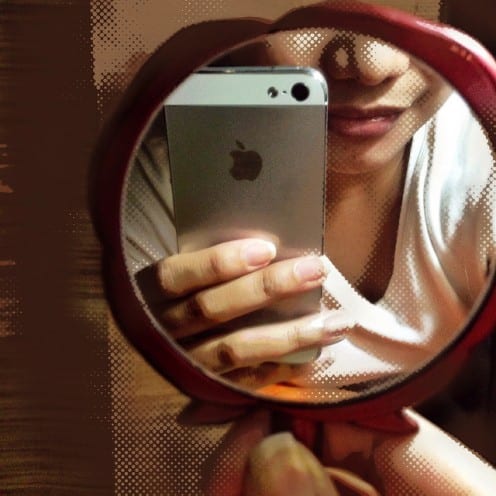The no make-up Selfie
By Daniel Miller, on 29 April 2014
My previous blog post was about the Selfie and our failure to acknowledge its varieties including the ‘uglie’ and the poignancy of a Selfie that proclaimed someone as cancer free. But in general the Selfie is something that has been largely restricted to younger people in my fieldsite. I now want to extend the previous blog to consider one more variety – the no make-up Selfie. Since this is something that had a very clear presence in my study. Most adult women who I have Facebook friended as part of this fieldwork have now put up a no make-up Selfie, even though most of them had never previously posted a Selfie of any kind.
Most of the journalistic attention has focused on several key elements. The first was the sheer level of success, with the UK raising 8 million pounds for cancer charities in around a week. The second was the participation of various celebrities. The third was a critique of this phenomenon. Perhaps one of the clearest critiques was by Jenni Murray. She pointed out that while no one can begrudge the successful raising of so much money for such a good cause, people who have been through cancer have grounds for seeing this as a kind of unfortunate pastiche/parody of the deterioration in their appearance that comes with cancer and especially with chemotherapy. In my hospice work I constantly see the massive impact of this loss of appearance on the desperate need to retain dignity during cancer. So the grounds for this critique are very clear.
This may not have been the intention of those who either began or participated in this genre, and most would probably be horrified to think that they have given offence. Though it is entirely possible that subliminally there was an association made and this was a kind of misdirected gesture of sympathy. However, when I turn to the evidence for the actual participation in this by ordinary people who appear on my research site, I would argue that the success of this campaign was only tangentially about cancer. I suspect it was in fact almost the direct opposite of what Jenni Murray concluded in her critique. Looking at these postings it seems clear that the no make-up Selfie was much more directed at the actual participants, and the excuse it gave them to do two contradictory things at the same time. One is that when a phenomenon becomes as huge as the Selfie and associated with the young, everyone wants to take part and post at least one Selfie, to feel included within the phenomenon. More a sense of inclusion than vanity per se. But at the same time most of these women constantly tell me in our discussions that they share pretty much exactly the same sentiment as Jenni Murray in their critique of young people as narcissistic and self-directed and see the Selfie as symptomatic of this decline in social values.
The no make-up Selfie was a way to both post a Selfie but at the same time be active in expressing a critique of Selfie culture. So far from individual vanity, the no make-up Selfie was highly socialised with each person nominated and then nominating others in turn. It was a direct repudiation of the aesthetics of the ideal Selfie in that it showed people at their worst. Unlike some celebrities most of the people on my site didn’t just decline to wear make-up. They clearly aimed for a kind of truth telling warts and all look that emphasised a view of their face that they would normally hide away. In short they used it to critique not just the Selfie but the much wider social pressure to appear glamorous and made-up for social consumption. Most contemporary English women share, at least in general terms, the feminist critique of these pressures to glamour, even if they routinely succumb to them. It was perhaps particularly important that this came out on Facebook, since it gave public voice to what these women inevitably say to me in private, which is that they want to use Facebook but somehow at the same time repudiate the vestige of shallow self-expression that Facebook became associated with as it emerged with youth. I don’t know if they will stick with Facebook but for Facebook to work for these older women they need to somehow cleanse it from these problematic associations of superficiality. By exploiting this charitable campaign they discovered a way in which they could collectively express their values and express their distaste with media such as Facebook and the Selfie which at the same time they are drawn to and want to employ. What they are looking for is not individualised self-expression but a return to more socialised and collective communication with family and friends that Facebook seemed to provide.
It is a generality of our anthropological observations, that most cultural trends that become this popular do so, not because they are the simple expression of some value, but because they help people deal with a contradiction in the values they perforce live with. The no make-up Selfie may be a typical example of that observation.
 Close
Close






